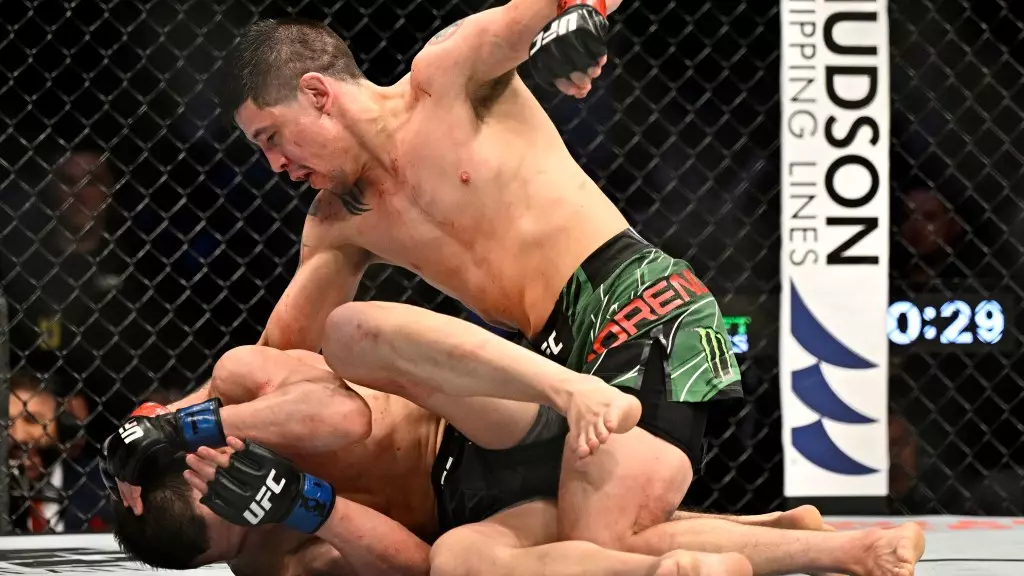The recent updates to mixed martial arts (MMA) rules, spearheaded by the Association of Boxing Commissions and Combat Sports (ABC), signify a pivotal moment in the sport’s evolution. These changes, which debuted at UFC Fight Night 246 in Edmonton, Alberta, aim to address longstanding ambiguities and controversies surrounding certain actions inside the octagon. This article delves into the implications and the potential impact these amendments could have on fighters, coaching strategies, and the overall landscape of professional MMA.
One of the most significant revisions to the unified rules is the redefinition of what constitutes a grounded opponent. The updated rule specifies that a fighter is considered grounded if any part of the body, other than the hands or feet, is in contact with the canvas. This change is particularly relevant during striking exchanges, as it aims to diminish confusion regarding when a fighter is vulnerable to knee or kick attacks to the head.
Previously, the ambiguity surrounding a fighter’s grounded status allowed for potential manipulation, where defensive fighters might deliberately place their hands on the mat to avoid strikes while unsure if they were truly grounded. The new regulation seeks to remove these ‘games,’ thereby creating a fairer and more transparent competitive environment.
Another significant overhaul involves the removal of the ban on 12-to-6 elbow strikes, a controversial rule that has faced criticism for years. Previously deemed more dangerous than angled elbow strikes, the validity of this assumption has been increasingly challenged by industry experts. The ABC’s decision to legalize this strike means fighters can now utilize it safely within a strategic framework, fostering a more dynamic fighting style.
This rule change carries historical weight, as it was the infraction that led to Jon Jones’ disqualification—a moment forever etched in UFC history. By eliminating this ban, the ABC is not only modernizing the regulations but also addressing the frustrations expressed by fans, fighters, and commission officials alike.
With these rules officially taking effect, it is crucial for fighters, coaches, and organizations to adapt promptly. The California State Athletic Commission (CSAC) has already taken proactive steps by producing informative material that elucidates the new regulations for stakeholders across the sport. Videos demonstrating the adjustments, featuring the likes of referee Mike Beltran and MMA veteran Urijah Faber, show a commitment to ensuring that all participants understand the implications of the rules.
As fighters prepare for their bouts, it is imperative they integrate these changes into their training regimens. The newly defined grounded opponent rule could significantly influence takedown strategies and striking combinations. While the removal of the 12-to-6 elbow ban may encourage more aggressive engagements, it also necessitates heightened awareness regarding legality and technique.
Only time will tell how these new regulations impact the sport as a whole. As MMA continues to grow in popularity, regulatory bodies must remain adaptable and responsive to the needs of fighters and fans alike. The ABC’s recent updates are a commendable step toward refining the competitive landscape of MMA.
Moreover, this set of changes paves the way for further discussions surrounding additional rules and regulations that could enhance the sport. Stakeholders from all corners must remain engaged in conversations about fighter safety and fair competition, as the ultimate goal is to ensure that MMA evolves in a manner that promotes skill, integrity, and respect among practitioners.
The implementation of these rule changes marks the dawn of a new era in MMA. By clarifying the grounding rules and removing contentious regulations, the ABC has taken significant strides toward refining the sport. Each fighter stepping into the octagon from this point forward will operate under a framework designed to enhance combat while maintaining the core essence of what makes MMA a compelling sport.
In embracing these revisions, the MMA community has the opportunity to continue cultivating a safer and more spirited environment, ensuring that the thrill of the fight remains paramount in the years to come.

